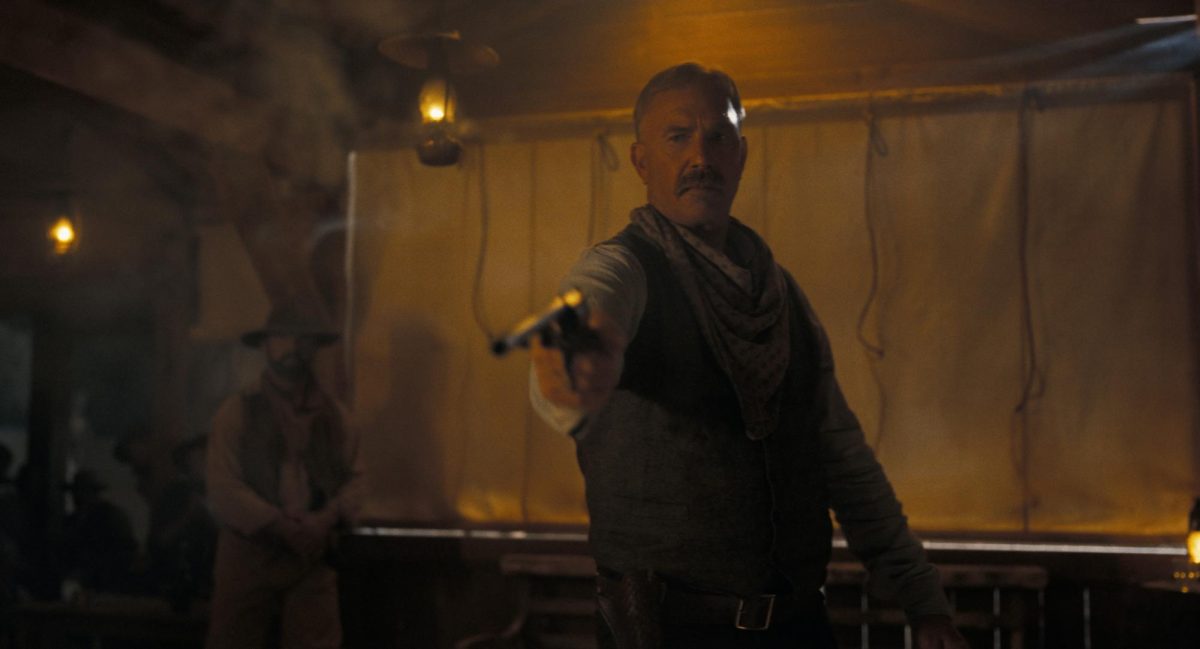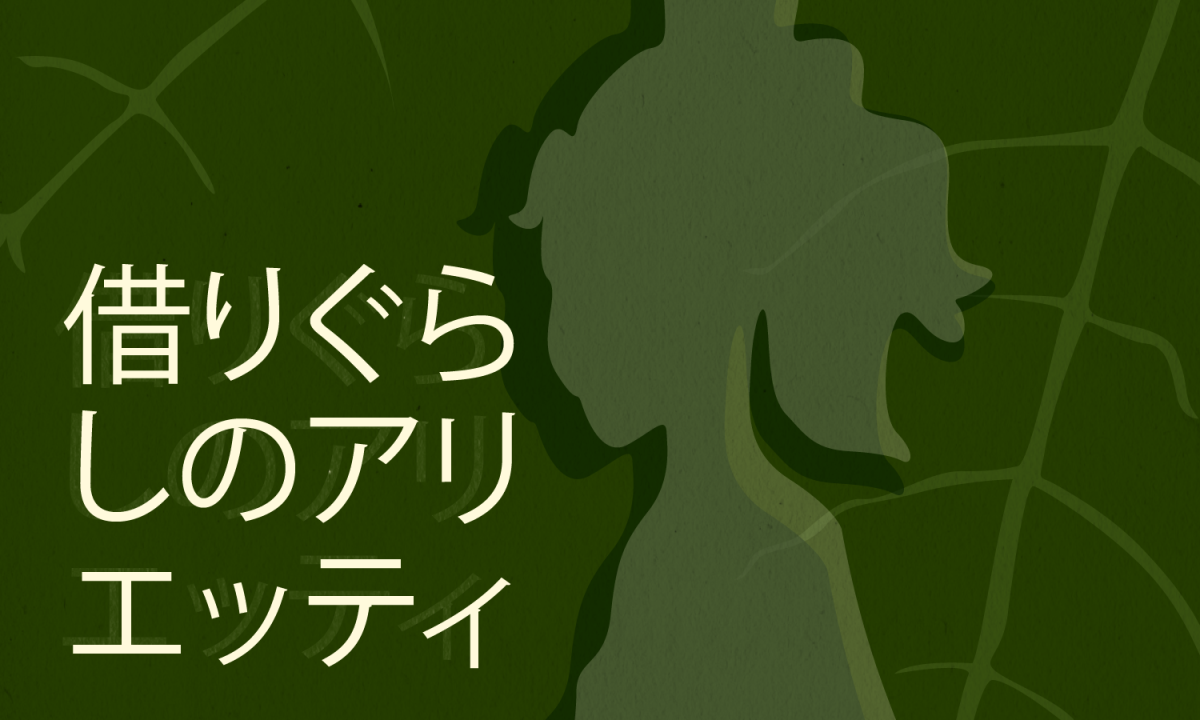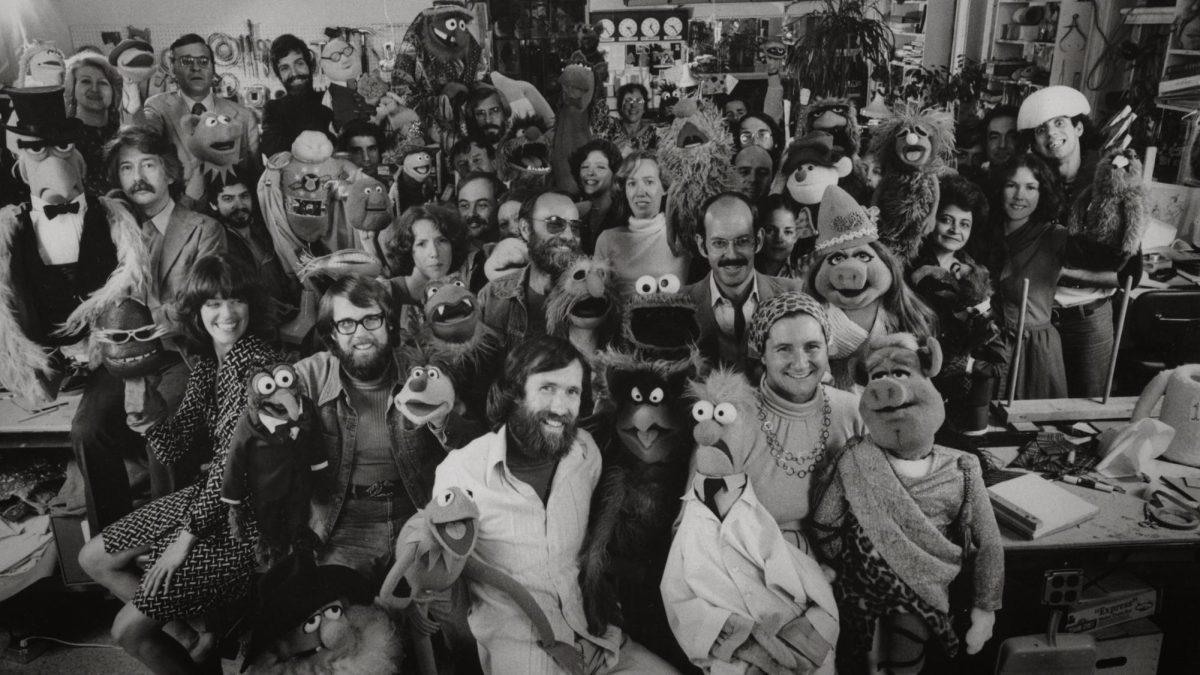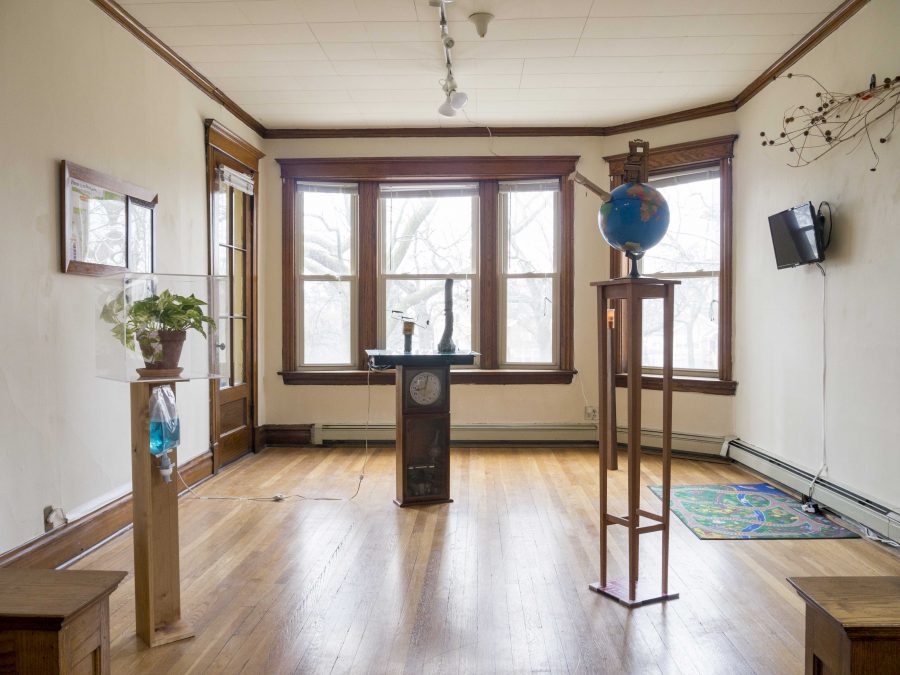A couple of years ago in upstate New York, artist Kelsey Harrison began to collect sticks. That’s right, sticks — sticks and ideas about what it means to exert control over space. At the time, Harrison said she’d been looking at a particular “violent moment in history,” but this moment was not something so obvious as war or civil rights. Instead, she concerned herself with freeways and looked at the way in which they had chopped up America into boundaries and uprooted the lives of the people established in those areas. She began to see patterns and became acutely aware of the hubris involved in urban development, especially as it related to the historical developer Robert Moses. On her wall, where her pieces are displayed, she pins up all of these disparate ideas from her research, “A Beautiful Mind” style. Then she pointed to the notes that I was scribbling down in makeshift shorthand. “You might have to do something similar,” she said.
For her, a sense of entitlement to space ultimately boils down to an exercise in whiteness. “It’s a scale of meddling that’s hard to imagine,” she said. It would be different for Robert Moses, a straight man, compared to her, a queer woman, to dictate the use of space. So, with that in mind, she began to fit sticks together, experimenting with perfect fits in rudimentary joints. What does it mean to control, to perfect or to own?
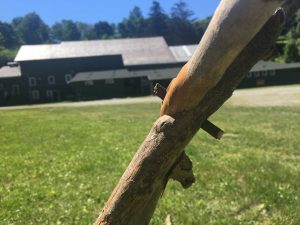
“Wood is the only medium I enjoy for its own sake, you know,” Harrison said. “It’s something you can float towards.” Originally, clay acted as her springboard into the art world. After coming to the University of Utah, which has a more craft centered arts program, she began to move into “vogue” forms. Still, she expressed the sentiment that “no one should ever be talked out of their medium.”
Both intellectual and down-to-earth, Harrison appreciates a challenge. As an assistant professor, she is often thrown into random classes, which might be frustrating for another educator. Instead, she views it as an opportunity: “There’s a lot of learning. You can never predict what [the students] will do.” Being in that position creates situations of forced innovation. Much of her teaching involves conceptual practice with themes that she would not normally use in her own work, ones she described as “wistful subjects,” including memory, time and identity. Leading these subjects is “its own challenge.”
In spite of the differences, identity comes up in her work as well, but not as self-expression. For her, identity is more a matter of analyzing the social forces shaping us — she looks at group identity as expressions of power and social behavior. Specifically, as someone deeply invested in the physical manifestations of ideas, she sees this in what our cities look like. She talked at length about the high rise, luxury condos in Salt Lake City, an interest sparked by her work in New York. “You see these condos with grandma names, like Ruth, and they say ‘she’s worth the wait.’ It’s like their equating buying to deflowering. And then what does it mean when you live inside? Owning is like prostitution.” Here she whipped out a favorite phrase of hers: “That’s gnarly.” The names of these buildings hit ideologically driven bullet points, using words like freedom as garnish. “It’s like, ‘you like freedom— here’s this condo,'” she said. Ownership becomes inextricably linked to the idea that luxury is freedom. She would rather look at the material world in this way, to see what it tells us about culture, rather than her personal history. Her work is ultimately about “not my whiteness, nobody gives a s*** about that.” Instead, she wants to know how we are affected, how space and land ownership influences “[her] fantasies [and] expectations.”
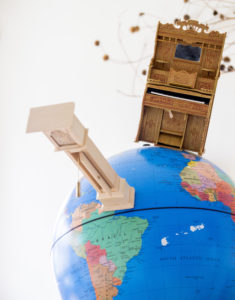
In a new exhibit that opened on Jan. 25, Harrison pursued this fascination with ownership, especially as it relates to colonial ideologies. She is one of many artists that will be a part of the Utah Museum of Contemporary Art’s show “Shady Acres.”
The show is an exploration of suburbia, the implications of leaving the suburbs and what remains of it. Playing off of suburban tropes in the show, the release picture features a pleasant, bright neighborhood with a hotboxed car dead center.
For her part, Harrison is reworking an exhibit that spoofs Robinson Crusoe, which she had previously installed in Chicago. The story has significance for her as a document of the time that initiated a new, colonial relationship with the world. She finds this life of entitlement becomes “salient” at this point in history, like a “guidebook on white thinking.” The original story followed a castaway who builds a one-man civilization, enslaves the first man he meets and spends 28 years in self-pity. Harrison sees this original story as a desire for ultimate agency and self-sufficiency. However, she doesn’t think we should be “abjectly dependent” as the notion of “being entirely self-sufficient is gross” to her.
In the exhibit, Harrison takes on the role of a modern-day Crusoe, which exaggerates the self-pity to the point of comedy. Her Crusoe is a real estate agent in Daybreak, a practically self-sustaining suburban community in Utah designed by only two “god-heads.” Naturally, this falls right into Harrison’s thematic forte. After Crusoe is fired for being too “gung-ho,” he leaves with all of his office supplies, drives away and “shipwrecks.” Her film of adventure, if you can call it that, plays in the exhibit, showing the crash and Crusoe’s attempts to rebuild his life with office supplies. The rest of the exhibit preserves the artifacts from the crash, including a phony drone made out of a can of wood stain with the label “colonial maple.” She also incorporates a world globe with a miniature piano and grandfather clock fixed to it, possibly emphasizing an imagined colonizer’s world view. When we spoke, she was thinking about making a ship-mast out of a hatrack, and said “the shirt could be the sail, maybe.” She seems to keep her ideas flexible, which stands out in light of how she feels about control. She allows her project’s space to grow organically.
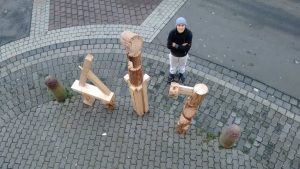
Her recent work in Germany, a public work for the Pfalzer Hof, came back to the question of who has control. Similar to her work in New York, she wanted to explore what it meant to occupy space. The project, which was to convert timber from a historic hotel into a sculpture, required her to bring her own tools. Technically, she could have brought small power tools, but she decided to be “excessively strict.” Again, she likes a challenge. As she contributed to the public landscape, the project brought her back to thinking about occupied space. It led her to consider the transience of things created, especially as most architecture leads us to believe that it is a natural part of the landscape. “Growing up,” she said, “I looked at the world like everything was a given, but it’s not — the world is barely slapped together.”
While in Germany, she visited an ancient restaurant, built around 1350. Unlike modern construction, the timber was exposed, which struck her. Her sculpture is constructed in the same way. Nothing in the product is obstructed — like her work in New York, the rudimentary joints are exposed. It shows design takes some of the magic out of what is built, but also the sense of powerlessness. A great portion of what we use is covered by sleek metal and plastic, and sometimes we forget what needs maintenance. Harrison knows people that feel betrayed when their cars break down. How is it that we need to serve the machines that serve us? She sees an almost Crusoe-like inclination to say “call me master.” People tend to have little participation in the physical composition of their lives. As she allows people to see the basic construction, fit sticks together and chart our world view from the colonial period, Harrison compels us to look at our cityscape in a new light. There’s a need for collaboration and maintenance in our everyday lives.
“Shady Acres” will be showing at UMOCA from Jan. 25 until May 25.








